I am trying to grow Oakmoss lichen (Evernia prunastri) at home, which is a highly valued lichen in the perfume industry due to its woody and sweet odor.
Lichens consists of an association between at least a fungus and a green algal partner - but often other organisms like yeasts and cyanobacteria are also present in the association.
I tore some oakmoss to expose the white tissue underneath, and you can see the fungal hyphae and the algae:
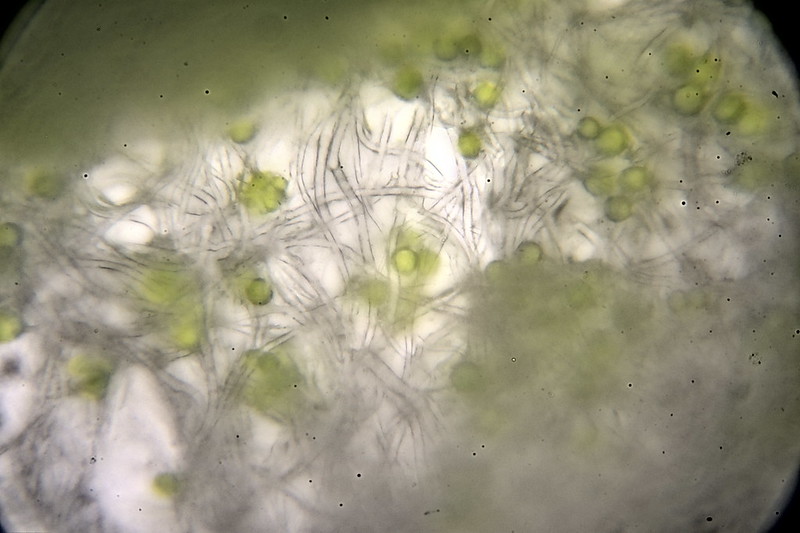
To culture a fungus one usually begins by isolating it away from the many contaminants that are naturally present on the fungus. Lichens are more problematic because in their lichenized form they grow too slowly to succesfully out-pace contaminants. The organisms that they are made of grow faster when they are not lichenized, but they have different methods of isolation. The trick to grow them is to isolate the fungus (mycobiont) and the alga (photobiont) separately and then try to bring them together in a process called "resynthesis".
I am trying to do this process at home, starting from a small piece of lichen that I collected from the bark of a tree. This is what grew out of the tissue sample when it first went into the agar, showing lots of contaminants fighting for the nutrients in the dish:
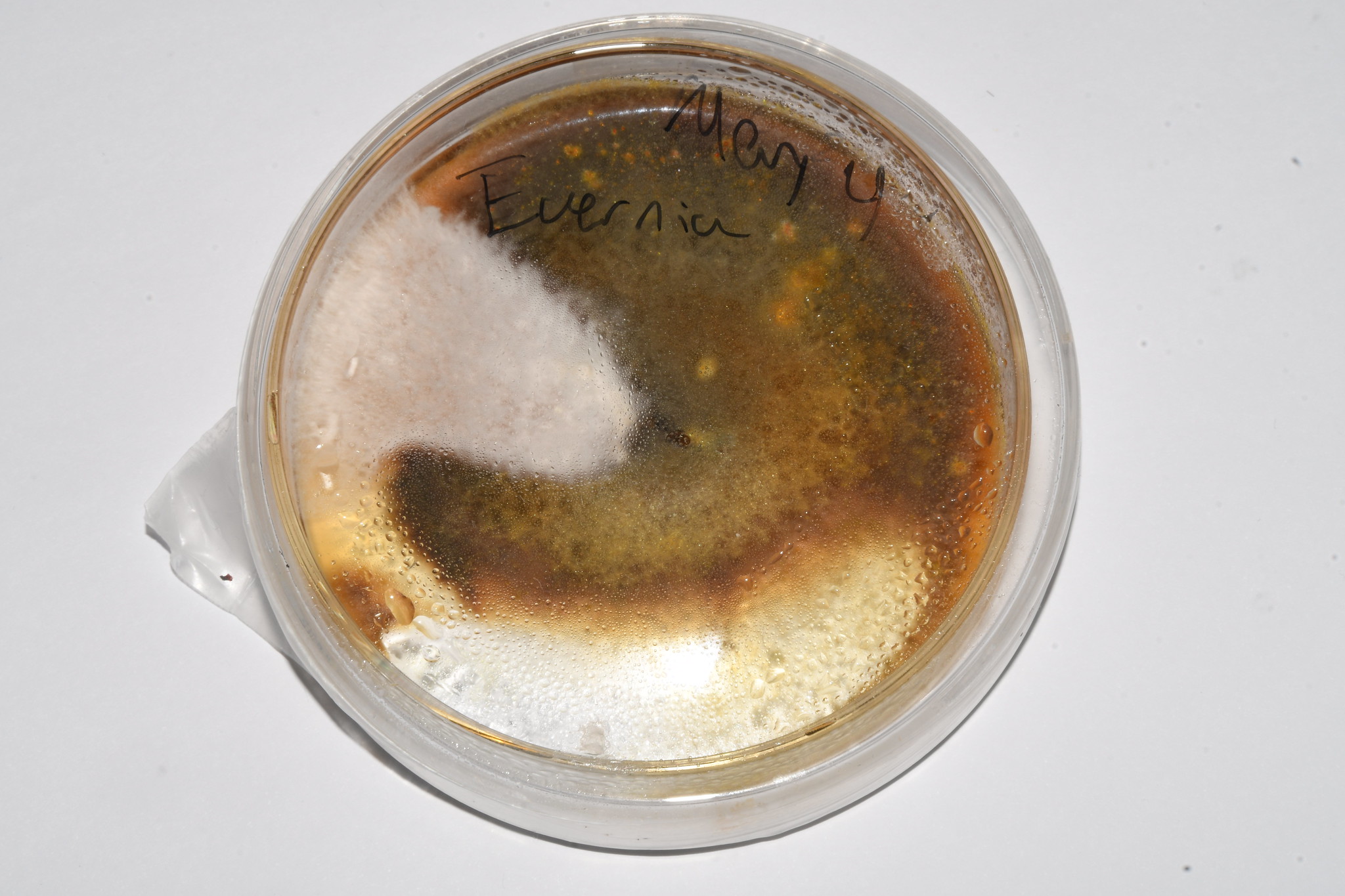
And this is the growth after the first transfer:
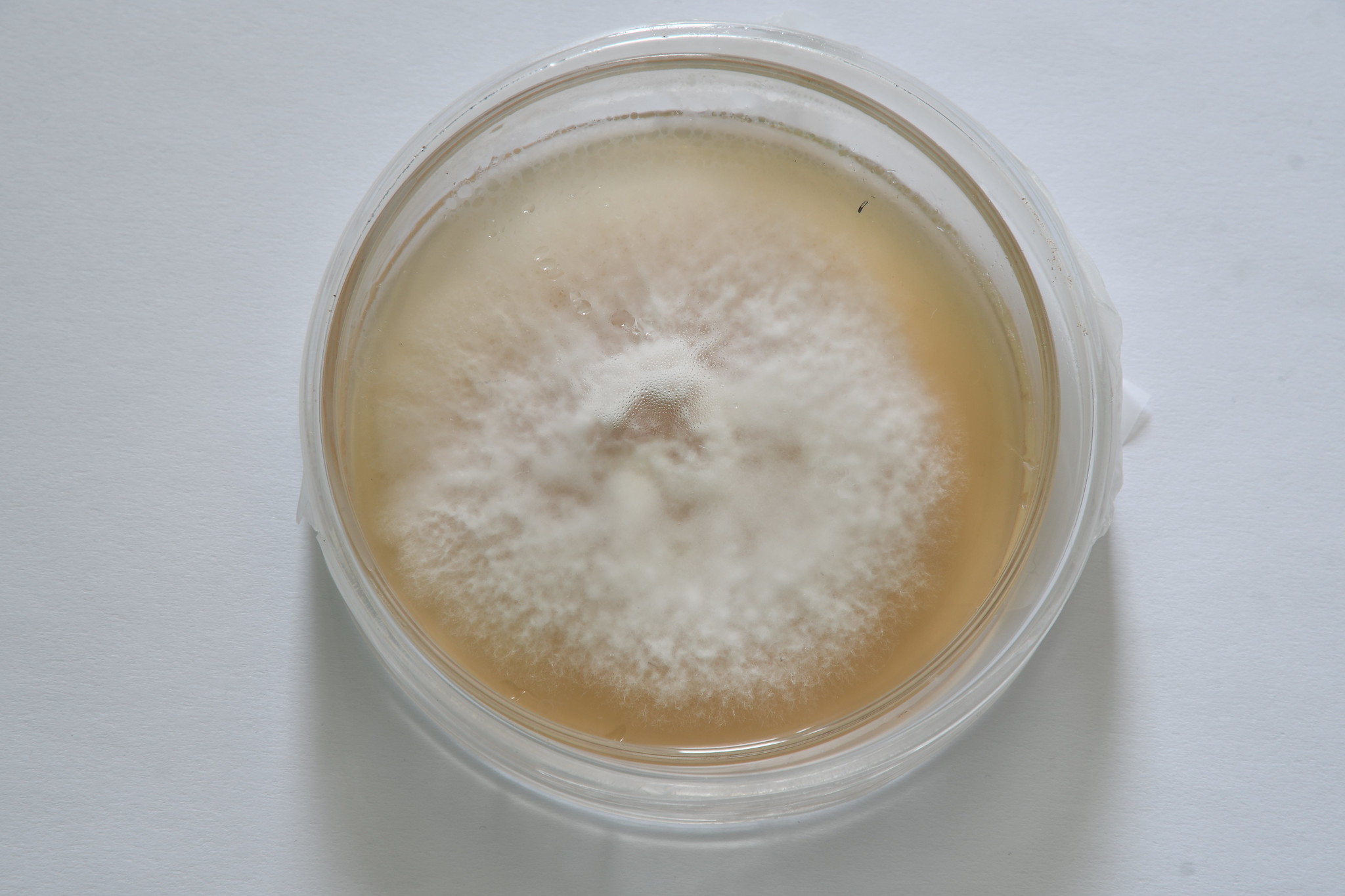
In parallel, I am trying to isolate the algal partner, which is a Trebouxia. One method is to place the tissue in agar plates with no nutrients and expose the plate to the sun. The other method is to place the tissue in a solution of orchid fertilizer in water and leave it by the window.
The cells of the alga are easily released into the water when the lichen is crushed. I confirmed that under the microscope. This is a photo of the released Trebouxia cells under the microscope:
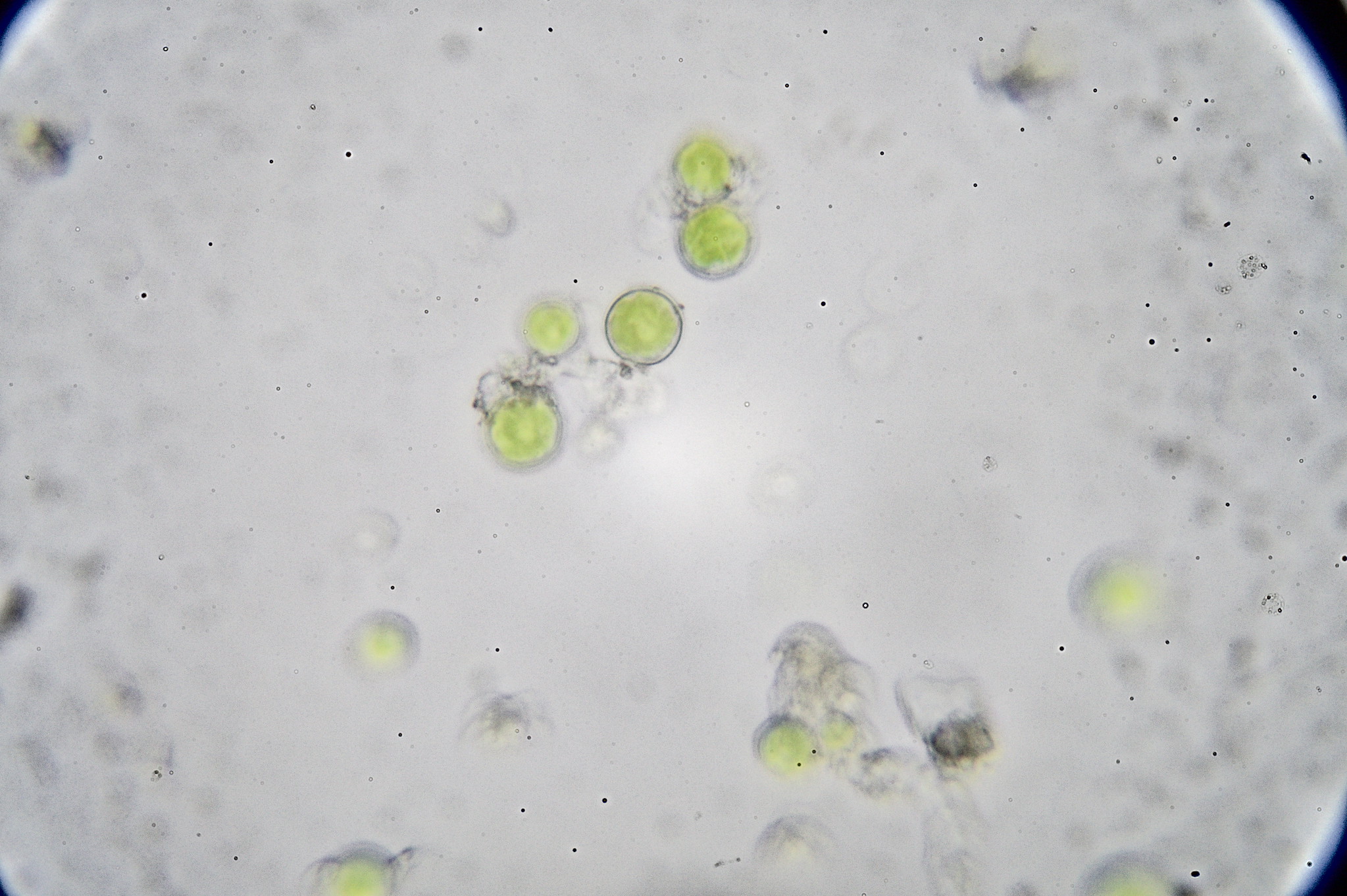
The plate in the image associated with this post is a plate of the Evernia mycobiont that had bacterial contamination in it. Rather than throwing it away, I decided to crush some lichenized tissue in water and pour in on top of the lichen to check whether that is enough to achieve lichenization.
Just wanted to share some of my experiments! Any input on how to achieve the resynthesis would be greatly appreciated ;-)









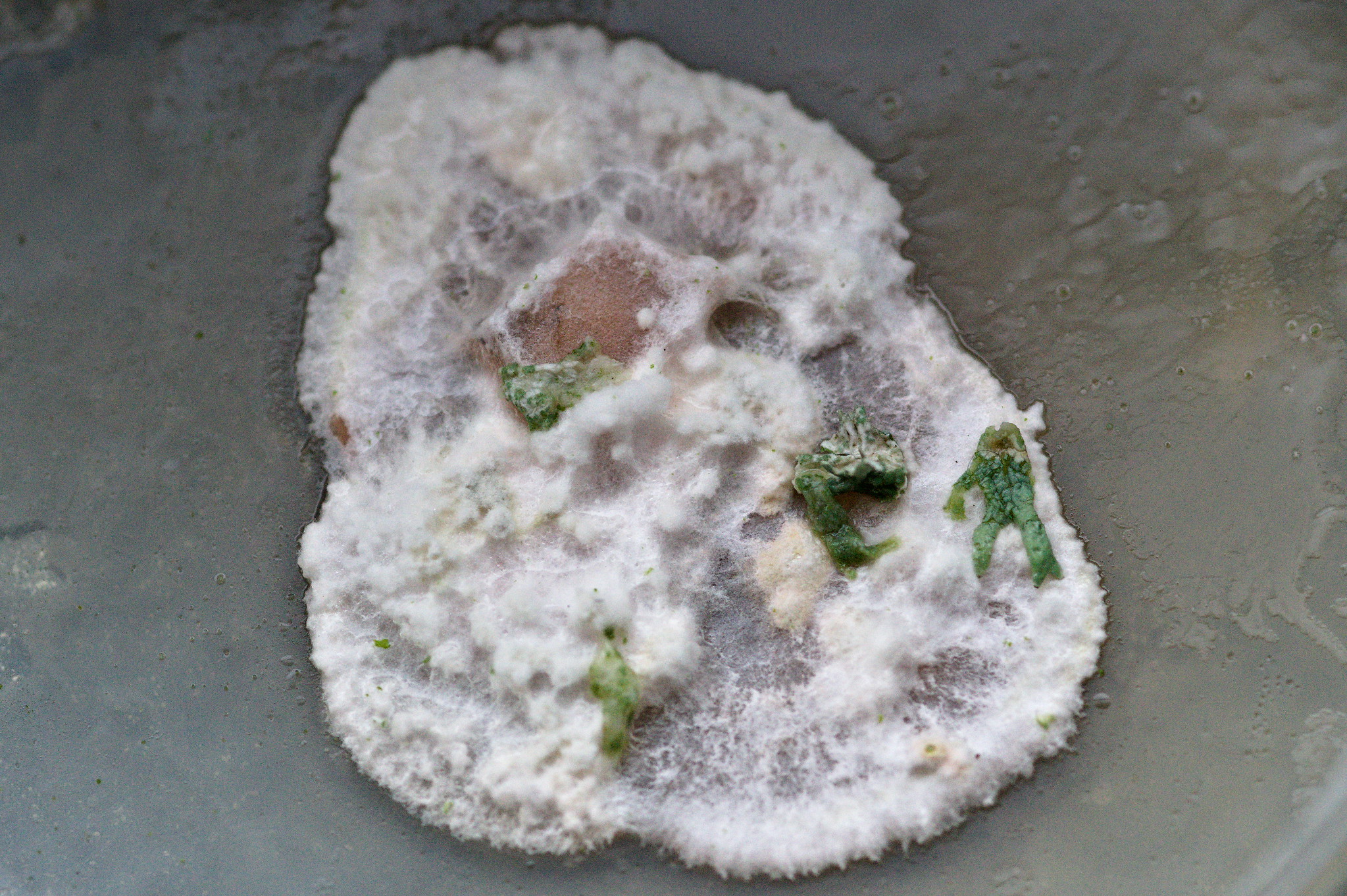
Thanks :D